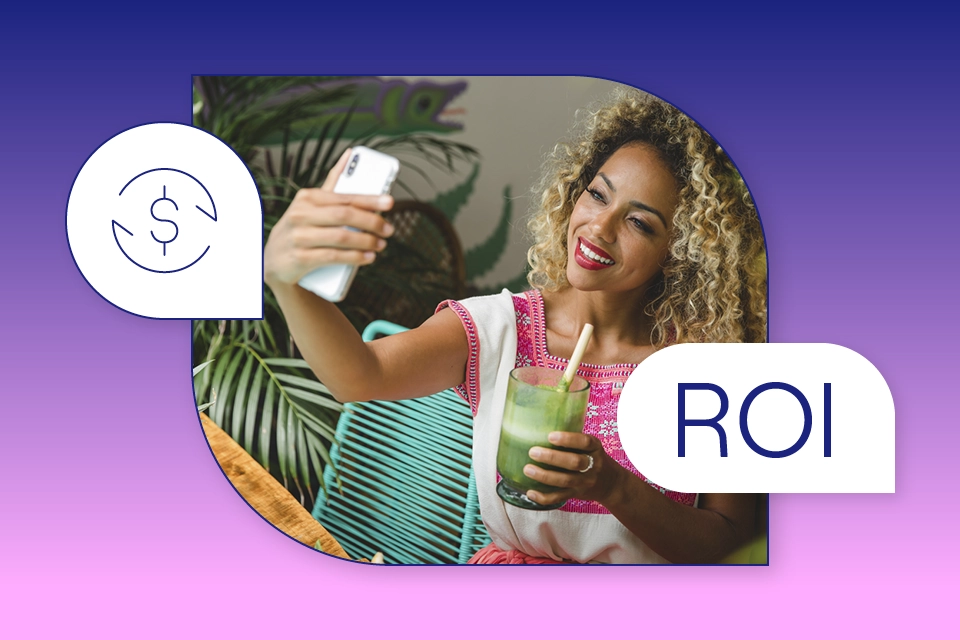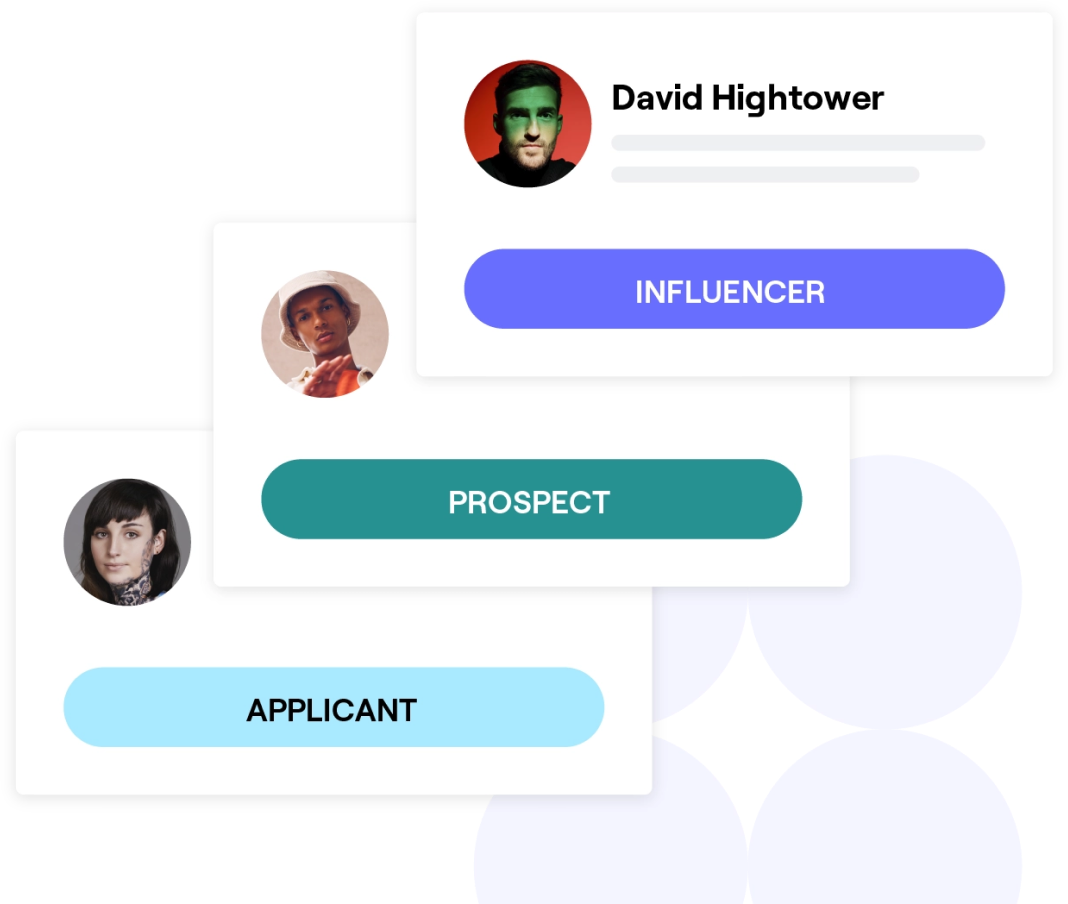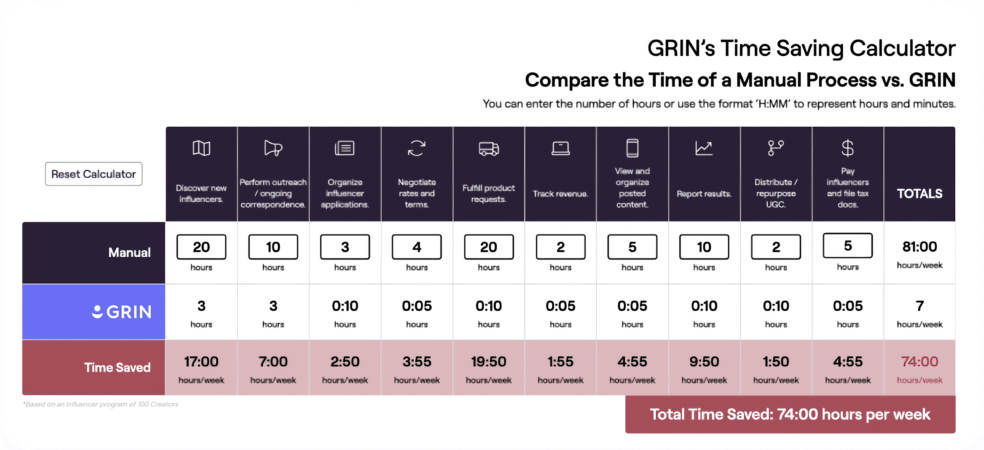Marketing to an audience with a short attention span is challenging, especially when it involves paying a hefty fee to a superstar influencer just to capture their attention.
However, did you know there are various tiers of influencers?
Among those tiers are micro influencers. No cap (that is Gen Z for “no lie”), micro influencers offer a fantastic opportunity to promote your product to specific niche communities without draining your budget.
At GRIN, we provide the tea into the realm of micro influencers and offer guidance on optimizing their potential for your brand. Let’s get started, shall we?
What are micro influencers?
A micro influencer is an influencer that typically has a follower count of 10,000–100,000. Don’t let the term ‘micro’ deceive you. Despite their smaller following, micro influencers can still shine when it comes to brand exposure. Plus, they’re like the friendly neighborhood influencers – easy to reach out to and super responsive. Think of them as having a direct line to your target audience with a personal touch. That said, each brand may have its own set of criteria about what makes an influencer a micro influencer. Whether you define micro influencers as having less than 10,000 or 100,000, you and your team must be on the same page.
There are four different tiers of influencers, categorized by audience size.
The creator tiers include:
- Nano influencers: 1K–10K followers
- Micro influencers: 10K–100K followers
- Macro influencers: 100K–1M followers
- Mega/Celebrity influencers: 1M+ follower
The difference between micro influencer marketing and traditional influencer marketing
Influencers of every size have unique advantages and disadvantages. But the most significant benefit of micro influencers is that you can target particular audiences, such as niche groups, those located in a specific region, or communities with shared, strongly held values.
In more traditional influencer marketing campaigns, your brand can achieve maximum reach with macro and celebrity influencers since these people enjoy massive followings. Larger influencers are suitable for national and international brands, popular product categories, or any company with a large, diverse customer base.
That said, macro influencers tend to be more costly than micro influencers. And though much smaller, micro influencer audiences are usually more engaged and easy to convert into customers.
With micro influencers, brands with high conversion goals and lower budgets often achieve better results. More prominent brands also use micro influencers, but they may diversify their funding to include macro and celebrity influencers, too.
The benefits of micro influencers
1. Micro influencers have strong relationships with their followers.
It’s much easier for creators to engage with followers when there aren’t hundreds of thousands of them. A high level of engagement leads to more trust and a stronger connection—a winning recipe for brands hoping to leverage that consumer trust.
2. Micro influencers have more engaged followings.
Studies show that micro influencers have much more engaged audiences. The strong relationship translates into more meaningful interactions in post comments and shares.
Many followers of celebrity influencers may love the celebrity and seek to live vicariously through them, but they’re less likely to feel connected to that individual on a personal level.
3. Micro influencers are more affordable and may even accept product gifts.
Many micro influencers are just starting or creating on the side. For this reason, some of these influencers are willing to post in exchange for product gifts.
However, offering your creators fair compensation is critical to building trust and long-term relationships. Consider adding them to your ambassador or affiliate team, giving them free products, and offering them a commission on the sales they drive.
4. Micro influencers have better availability.
When it comes to reaching out to influencers with smaller followings, it’s less of a hoop-jumping act to contact the influencer you want to hire for promoting your brand. They’re more likely to respond promptly compared to counterparts with larger followings.
Macro or mega influencers generally face higher demand and may take longer to respond. Unlike celebrity influencers who may have time constraints that can further delay deadlines, micro influencers are typically ready to work promptly.
5. Micro influencers have niche audiences.
The majority of micro influencers are typically experts in a particular area, hence they have followers within a niche community. Brands can leverage these niche communities to attract new attention to their products or target specific audiences.
6. Micro influencers are more authentic.
Let’s face it, consumers want realness. They want to feel like their best friend is telling them about a product rather than it being shoved in their face and being yelled at to use a coupon code. That is a HUGE red flag to them, and they will scroll past the ad.
However, micro influencers normally don’t have that problem. Their audience trusts them because they build their audience on mutual interests. Another aspect to consider is that micro influencers often garner higher engagement rates compared to other influencers.
How to find the right micro influencers
Once you identify your campaign objectives and what you are looking for in an influencer, it’s time to go out and find them. There are a few different ways to begin your outreach.
Look among your followers and customers.
If you’ve been in business for any amount of time, you likely have influential customers and followers who love your brand. The easiest way to build your influencer team is to reach out to each of them and ask for a shoutout.
Additionally, you may already be getting shoutouts without you asking for them. Using social listening tools or seeing who has tagged your brand on social media, you can locate these brand fans and convert them into sponsored partnerships.
Scroll social media.
Another great way to find micro influencers is to follow your favorite ones on your top channels. First, make sure that you establish your brand presence on that channel before you start scrolling and following.
Look for active influencers in your industry that serve the same audience. You can initiate relationships with these individuals by following them and then liking or commenting on their best posts.
Disclaimer: Refrain from offering to collaborate with an influencer on a public post or comment. Reserve your outreach messages for direct messenger or email.
Ask Google for suggestions.
Search engines can answer any number of questions, including ones like:
Arts and craft influencers
Simply type your industry, the word “influencer,” and any other descriptors you wish to add.
Use GRIN’s Creator Discovery Suite.
GRIN’s Creator Discovery Suite offers brands five powerful tools to identify top-notch talent:
- Creator Search: Filter tens of millions of creators by keywords and key metrics until you find the perfect match.
- Curated Lists: Tell the GRIN team about your ideal creator and they will deliver a hand-picked list right to your email inbox.
- Landing Pages: Set up a customized landing page on your brand website where creators can apply to work with you directly.
- Social Listening: Monitor mentions and hashtags so you can always keep an ear tuned into the online conversation about your brand.
- GRIN Web Extension: Vet creators quickly and effectively while natively browsing your social media platform of choice.
How to work with micro influencers
While most large influencers hire agents to vet brand deals, micro influencers typically represent themselves. They may also be pickier about their brand partnerships or feel less familiar with how collaborations work.
Since your most lucrative partnerships will be those that last for a long time, keep in mind that many micro influencers become macro influencers over time. So how you start these relationships is key to achieving both short and long-term success.
Research, research, and oh yeah, research!
Be sure to research micro influencers whose audience, core values, and content align with your brand. You have to “vibe check” the influencer by ensuring they have a genuine connection with their followers while producing content that relates to your brand.
Be genuine.
While reaching out to micro influencers, they don’t respond well to stale corporate messages starting with “I hope this email finds you well.” They will get the “ick” and not respond.
Instead, take the time to show the influencer that you have done the research on their content and how it aligns with your brand. Be sure to be transparent on what you are offering like the cost per post, incentives and anything you want to add. After first contact, be sure to be clear on the compensation, expectations, deadlines and deliverables.
Keep an eye on the performance.
Take note of how well the influencer’s content is performing with your brand. You can do this by monitoring engagement rates, conversions, and reach. Gather the data, and then provide feedback to the influencers to make improvements. Be sure to provide resources and examples to help the influencer get a better sense of what your brand is trying to achieve.
Build a strong relationship.
As with any relationship, maintaining communication with the influencer you wish to collaborate with further is ESSENTIAL. Continue engaging with them on social media and ensure they feel valued for their contributions to your company.
How to measure the impact of micro influencers
After finding the right influencers, it’s time to plan and execute your campaign. Your initial campaigns will teach you a lot about what micro influencer success looks like. As you become familiar with tracking performance and onboarding new creators, you can refine your strategy over time.
Here are common performance metrics you can use to measure the impact of micro influencers:
- Engagement rate: Engagements include likes, follows, comments, shares, duets, etc. The best engagements are comments and shares from micro influencer followers. This user-generated content (UGC) increases the potency of your campaigns and is a strong indicator of how well it is performing. You can find your engagement rate by dividing the number of engagements by that creator’s follower count.
- Website traffic: If you’re using links (affiliate links, UTMs, swipe-ups, etc.) in your campaigns to increase website traffic, then you can watch your Google Analytics to see any changes in the number of new web visitors.
- Followers: Many brands see an increase in their follower count during influencer campaigns. This metric is suitable for tracking increased brand awareness.
- Conversions: If you’re trying to boost subscriptions or sales, you can leverage coupon codes and affiliate links to see which influencers drive conversions.
Brands already succeeding with micro influencers
Sephora
The major beauty retailer employs micro influencers to endorse its brand while providing a platform for these influencers to expand their reach. For instance, Karen Wu, a beauty micro influencer, was featured on Sephora’s Instagram page after creating a post promoting the brand.
Starbucks
The caffeinated mermaid collaborates with micro influencers to endorse the brand. For instance, they featured a video from a micro influencer showcasing creative ways to stack Starbucks cups and upcycle them.
Key takeaway: Leverage micro influencers for more targeted, cost-effective creator campaigns.
What we’ve discovered is that size isn’t always indicative of success. Collaborating with micro influencers provides brand companies with an opportunity to showcase their products to a fresh audience while supporting smaller influencers. In today’s world, people rely on influencers for recommendations and seek genuine, authentic individuals to share their product endorsements with their followers.
Learn more about influencer marketing: Influencer Marketing 101

















